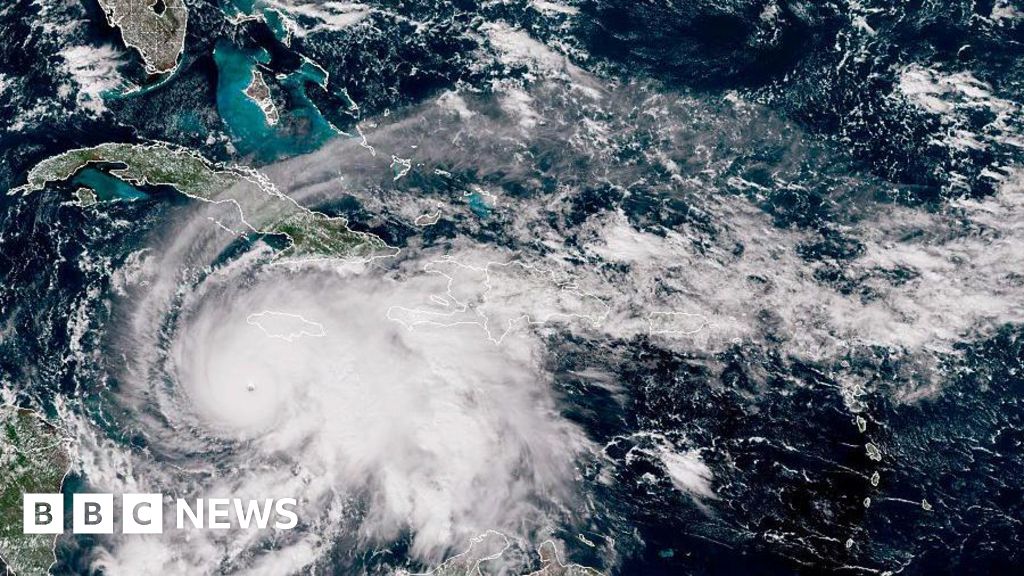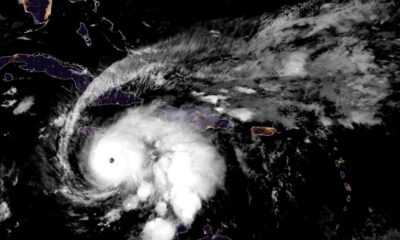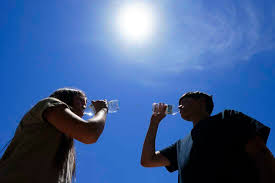Science
Hurricane Melissa Strikes Jamaica: Climate Impact on Storms Explored

Hurricane Melissa, one of the most powerful Atlantic storms ever documented, has generated “extremely dangerous and life-threatening” conditions across Jamaica, as reported by the US National Hurricane Center. This event has prompted renewed discussions about the relationship between climate change and hurricane strength.
While climate change is not believed to increase the number of hurricanes, typhoons, or cyclones globally, the phenomenon is thought to enhance the intensity of those that do occur. Warmer ocean temperatures and a heated atmosphere, both consequences of climate change, can lead to stronger storms with higher wind speeds, increased rainfall, and heightened risks of coastal flooding.
Hurricanes, along with their counterparts—typhoons and cyclones—are collectively referred to as “tropical cyclones.” These storms form in warm tropical waters and are characterized by high wind speeds and significant rainfall. Specifically, hurricanes are classified based on their peak sustained wind speeds, with major hurricanes categorized as level three and above, attaining speeds of at least 111 mph (178 km/h).
Formation and Impact of Tropical Cyclones
The genesis of hurricanes begins with atmospheric disturbances, such as a tropical wave or a low-pressure area where thunderstorms develop. As warm, moist air rises from the ocean surface, it causes winds to rotate. This process is influenced by the Earth’s rotation, particularly in tropical areas near the equator. For a hurricane to form, the sea surface temperature typically needs to be at least 27°C, providing the necessary energy, while winds must remain relatively stable at varying altitudes.
Globally, the frequency of tropical cyclones has not increased significantly over the last century, and in some regions, it may have even diminished, though comprehensive data remains scarce. Nevertheless, the Intergovernmental Panel on Climate Change (IPCC) indicates a “likely” rise in the proportion of tropical cyclones reaching category three or above in the past four decades. Additionally, there is “medium confidence” that average and peak rainfall rates associated with these storms have escalated.
The Atlantic has seen an increase in “rapid intensification events,” where maximum wind speeds rise swiftly, creating heightened dangers. The movement of tropical cyclones across the Earth’s surface has also slowed, often resulting in increased rainfall over affected areas. For instance, Hurricane Harvey in 2017 stalled over Houston, causing an unprecedented 100 cm of rain in just three days.
Climate Change’s Role in Hurricane Intensity
Research shows that the average location where tropical cyclones reach peak intensity has shifted poleward, exposing new communities to potential hazards. Evidence suggests that the increasing intensity of hurricanes in the United States correlates with greater damage. Understanding the exact impact of climate change on individual storms poses challenges due to the complexity of these systems.
Rising temperatures influence hurricanes in several key ways. Warmer oceans allow storms to absorb more energy, resulting in increased wind speeds. A recent study estimates that between 2019 and 2023, maximum wind speeds of hurricanes were enhanced by approximately 19 mph (30 km/h) due to human-induced ocean warming. Moreover, a warmer atmosphere can retain more moisture, leading to intense rainfall events. For example, climate change rendered the extreme rainfall from Hurricane Harvey about three times more likely.
Sea levels are also rising, driven primarily by melting ice sheets and glaciers, along with the thermal expansion of warmer water. This results in storm surges occurring on top of already elevated sea levels, worsening coastal flooding. For instance, flood heights from Hurricane Katrina in 2005 were estimated to be 15-60% higher than they would have been in 1900 climatic conditions.
The IPCC concludes with “high confidence” that human activities have contributed to increased precipitation linked to tropical cyclones, and there is “medium confidence” regarding the higher likelihood of these storms becoming more intense. While the total number of tropical cyclones globally is not expected to rise, the IPCC asserts that as global temperatures continue to climb, it is “very likely” that storms will experience higher rates of rainfall and reach greater wind speeds.
Should global temperatures rise, the proportion of tropical cyclones attaining category four and five status may increase by approximately 10% if limited to 1.5°C, escalating to 13% at 2°C and 20% at 4°C. The implications of these changes underscore the urgent need for climate action to mitigate the impacts of future storms.
-

 Entertainment2 months ago
Entertainment2 months agoAnn Ming Reflects on ITV’s ‘I Fought the Law’ Drama
-

 Entertainment3 months ago
Entertainment3 months agoKate Garraway Sells £2 Million Home Amid Financial Struggles
-

 Health2 months ago
Health2 months agoKatie Price Faces New Health Concerns After Cancer Symptoms Resurface
-

 Entertainment2 months ago
Entertainment2 months agoCoronation Street’s Carl Webster Faces Trouble with New Affairs
-

 Entertainment2 months ago
Entertainment2 months agoWhere is Tinder Swindler Simon Leviev? Latest Updates Revealed
-

 Entertainment3 months ago
Entertainment3 months agoKim Cattrall Posts Cryptic Message After HBO’s Sequel Cancellation
-

 Entertainment2 months ago
Entertainment2 months agoOlivia Attwood Opens Up About Fallout with Former Best Friend
-

 Entertainment2 months ago
Entertainment2 months agoMasterChef Faces Turmoil as Tom Kerridge Withdraws from Hosting Role
-

 Entertainment3 months ago
Entertainment3 months agoMarkiplier Addresses AI Controversy During Livestream Response
-

 Entertainment3 months ago
Entertainment3 months agoSpeculation Surrounds Home and Away as Cast Departures Mount
-

 World2 months ago
World2 months agoCole Palmer’s Mysterious Message to Kobbie Mainoo Sparks Speculation
-

 Entertainment2 months ago
Entertainment2 months agoITV’s I Fought the Law: Unraveling the True Story Behind the Drama





















